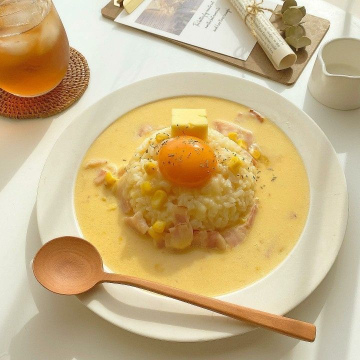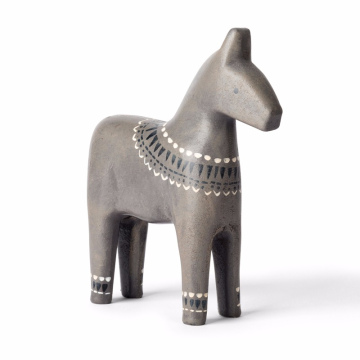Doncaster Butterscotch
Introduction to Spanish Cuisine
The culinary landscape of Spain is a vibrant tapestry, reflecting an extensive array of flavors, ingredients, and traditions that have evolved over centuries. Each region of Spain boasts its own distinct gastronomic identity, influenced by geographical characteristics, climate, and cultural heritage. From the verdant hills of Galicia to the sun-drenched coasts of Andalusia, the diversity of Spanish cuisine is nothing short of remarkable.
At the heart of Spanish cooking lies a foundational selection of ingredients, with olive oil taking precedence as a staple in many dishes. This golden elixir not only enhances flavors but also contributes to the Mediterranean diet's renowned health benefits. Additionally, crops like corn, widely used in regional specialties such as tortillas, coupled with a bounty of fresh seafood from the extensive coastline, further underscore the importance of local produce in Spanish culinary practices.
Spanish meals are not merely about sustenance; they encapsulate social interaction and cultural significance. Dining times are often elongated, encouraging families and friends to gather, reflect, and engage with one another. Tapas, small plates meant for sharing, exemplify this communal approach, enabling diners to sample various dishes while enjoying each other’s company. This social dining experience serves as one of the key tenets of Spanish culture, where food is a vehicle for connection and celebration.
Historically, Spanish cuisine has been shaped by numerous influences, including the Moors, Romans, and other civilizations that have left their mark on the Iberian Peninsula. The melding of diverse cooking techniques and ingredients has birthed renowned dishes like paella and gazpacho, epitomizing the rich culinary heritage of Spain. Each bite conveys the complexities of history, tradition, and innovation, inviting food enthusiasts on an exhilarating journey through the heart and soul of Spanish culture.
Iconic Spanish Dishes You Must Try
Spanish cuisine is a vibrant tapestry of flavors and traditions, and several dishes stand out as iconic representatives of this culinary heritage. One of the most notable is tapas, a term that refers to a variety of small plates served as appetizers or snacks. Whether it is the classic patatas bravas, featuring crispy potatoes topped with spicy tomato sauce, or the delicate jamón ibérico, these small bites offer a perfect introduction to the richness of Spanish flavors. Tapas bars are prevalent across Spain; popular spots include those in Seville and Granada, where the tradition of sharing plates among friends thrives.
Another quintessential dish is paella, which hails from the Valencia region. This rice-based dish is traditionally prepared in a wide, shallow pan and can include a variety of ingredients, such as saffron-infused rice, seafood, chicken, and vegetables. The flavor is remarkably enhanced by the socarrat, the coveted crispy layer that forms at the bottom of the pan. Authentic paella can be found along the coast and in many eateries throughout Spain, particularly in Valencia, making it a must-try for anyone visiting the country.
For a refreshing taste of summer, gazpacho is an essential dish made from blended raw vegetables. This chilled tomato soup, garnished with diced vegetables and olive oil, is a soothing option that showcases the freshness of local produce. Andalusia is famed for its authentic gazpacho, especially during the hotter months.
Finally, no discussion of Spanish food would be complete without churros. These fried dough pastries, often enjoyed for breakfast or as a dessert, are typically served with a thick hot chocolate for dipping. Churros can be found in cafés and bakeries throughout Spain, with the best versions hailing from Madrid and Barcelona. Each of these dishes offers a unique glimpse into Spanish cuisine and culture, making them essential experiences for travelers and food enthusiasts alike.
The Role of Food in Spanish Culture
Food plays a pivotal role in Spanish culture, serving as a cornerstone of social interaction and community building. From family gatherings centered around traditional dishes to vibrant festivals celebrating regional specialties, the culinary landscape reflects a rich tapestry of history and traditions. In Spain, meal times are not merely about sustenance; they are deeply ingrained rituals that bring people together, fostering relationships and creating cherished memories.
Family gatherings often revolve around shared meals, emphasizing the importance of unity and togetherness. Lunch, typically the most significant meal of the day, often sees families congregating around the table to enjoy multiple courses, ranging from tapas to hearty paellas. This communal dining experience encourages conversations and strengthens familial bonds, showcasing the Spanish value placed on community and connection. Dinner in Spain tends to be served later in the evening compared to other cultures, with many enjoying their meals as late as 10 PM. This practice reflects the relaxed pace of life in Spain, where culinary experiences are meant to be savored rather than rushed.
Celebrations and food festivals also highlight food’s role in Spanish culture. Events like La Tomatina, a tomato-throwing festival, and Las Fallas, where elaborate sculptures are burned, transform food into a centerpiece of festivity, showcasing local ingredients and culinary creativity. These festivals not only celebrate food but also reflect regional pride, as communities come together to honor their unique cultural heritage. The vibrant, shared experiences of these events further strengthen social ties, illustrating how food fosters unity and cultural identity within Spanish society.
Exploring Spanish Food Markets and Gastronomic Tourism
Spain is renowned for its vibrant culinary scene, which is beautifully showcased in its bustling food markets. These markets are more than just spots to purchase fresh produce; they serve as cultural epicenters, offering visitors a glimpse into the local way of life. A prime example is La Boqueria in Barcelona, a historic market that dates back to the 13th century. With its colorful stalls featuring a variety of fresh fruits, seafood, cured meats, and artisanal cheeses, La Boqueria attracts both locals and tourists alike. This iconic market epitomizes the essence of Spanish gastronomy, inviting everyone to sample traditional delicacies and gastronomic innovations alike.
Similarly, the Mercado de San Miguel in Madrid offers an extraordinary gastronomic experience. Housed within a beautifully restored iron structure, this market features an array of gourmet food vendors showcasing regional specialties. From classic tapas to contemporary culinary creations, visitors can indulge in an eclectic mix of flavors that highlight Spain's rich culinary heritage. The market is not only a feast for the senses but also a community gathering place where chefs and food lovers connect over a shared passion for good food.
The concept of gastronomic tourism is gaining traction as travelers seek authentic experiences that delve deeper into a destination’s culture through its food. Culinary tours in Spain offer an excellent way to immerse oneself in local food practices. These tours often include visits to markets, tastings of traditional dishes, and lessons in artisanal food production methods. Engaging in such activities not only enhances visitors' understanding of Spanish cuisine but also fosters a meaningful connection with the community. The blend of local ingredients, cultural traditions, and cooking techniques reveals the unique tastes that define Spain's gastronomic landscape.








